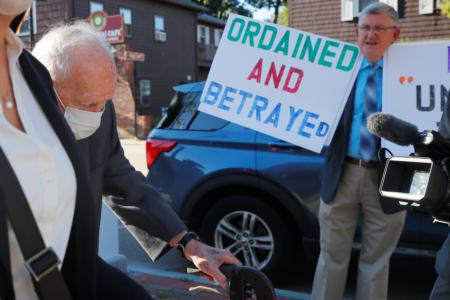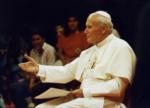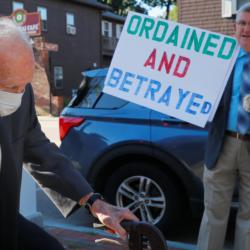How the heretics won me over
"This a desecration of the grand old game!" I harrumphed self-righteously when Major League Baseball announced the new rule prior to the 2020 season, such as it was.
To think that every extra inning would start with a runner already installed at second base, violated every die-hard traditionalist bone in my body. The thought of a pitcher losing a game because he gives up just a ground ball that advances the runner followed by a sacrifice fly was antithetical to everything I believed -- or thought I believed -- about baseball. This new rule is worse than a gimmick, I decreed. It is unadulterated heresy.
Having said all that, I now wish to announce that I have gone over to the side of the heretics.
I was watching a game the other night on TV when I was converted. It was between the Red Sox and the Tampa Bay Rays, and Christian Vazquez tied the score with a ninth-inning home run, sending the contest into extra innings, which meant the dreaded runner-on-second rule would take effect. I had already invested three hours into watching the game, so I made a snap decision to break my pledge not to even watch any extra innings that were tainted by the new rule. I'm glad I did because I was completely captivated for the next hour or so. In the bottom of the 10th, with Kike Hernandez installed as the runner on second, leadoff man Christian Arroyo tried to bunt down the third-base line forcing the third baseman to charge in to field it, thus leaving the bag open for Hernandez to advance; when the bunted ball went foul, Arroyo recalibrated and hit a grounder to the right side, which accomplished the same thing. Now the Sox had a man on third with only one out and J. D. Martinez up with a chance to win the game. The infield was drawn in to prevent the winning run from scoring on a ground ball; Martinez hit a hot shot to the left of the third baseman on which Willy Adames made a nifty play by managing to stab it and hold the runner while throwing out Martinez; Bogaerts then struck out to end the inning. The score was still tied but the inning had been thoroughly entertaining.
Tampa Bay grabbed the lead in the top of the 11th when Adames doubled home the installed runner. Adames was successfully bunted over to third but Sox pitcher Tanner Houck struck out the next two hitters, ending the threat. The Red Sox came right back in the bottom half when Rafael Devers lined the first pitch into left for a single, scoring Bogaerts from second with the tying run.
The Rays were right back at it in the 12th. Sox hurler Phillips Valdez unleashed a wild pitch sending the installed runner to third with none out. A slow roller to shortstop was enough to score him. The Red Sox came up in the last of the inning again, trailing by a run. Hunter Renfroe was installed as the runner at second, but things were not looking too good when the first two batters made outs. Then Alex Verdugo was hit by a pitch and a wild pitch sent Renfroe and Verdugo to third and second respectively. That set things up for J. D. The Red Sox still trailed by a run with two away but had two men in scoring position. It was do-or-die time for Martinez, who came through by lining one over the head of the right fielder, scoring both runners. The Red Sox had a victory and the runner-on-second rule had a new convert -- me.
The new rule automatically increases the level of tension in every half inning of every extra inning and makes games more compelling for spectators. It adds to the urgency of situational hitting and could result in a revival of the lost art of bunting. With it in effect, it will be more important for a hitter to make contact and put the ball into play than to just swing for the fences, greatly increasing the risk of striking out. Managers are going to relearn the old rule of thumb that, when a ball is in play, most anything can happen, a bad hop or an errant throw, perhaps; not much good can happen when you swing and miss.
I long for the return of the days of my boyhood, when Dom DiMaggio of the Red Sox or Phil Rizzuto of the Yankees could disguise a bunt by just dropping the bat on the ball at the last instant; or when Johnny Pesky, with Dom on first base, would drop a bunt down the third-base line, forcing the third baseman to charge in from his position to field it and throw to first while Dom would keep running from first all the way to third, which would be left uncovered.
It is true that starting innings with a runner already on second base changes the very nature of the game, but so did the designated hitter rule, to which I was also adamantly opposed when it was instituted almost half a century ago. But, while the DH rule detracts from in-game strategy (i.e. when or when not to pinch-hit for the pitcher) it has inarguably beefed up offenses and extended the careers of iconic players, such as Carl Yastrzemski. One shudders to think of what would have happened to the Red Sox World Series dreams in 2004, '07 or '13 had there been no designated hitter and by extension no David Ortiz in the lineup.
Rather than causing the ruination of baseball, the runner-on-second rule could prove to be its salvation. If it proves to be as popular as I think it might, what's to prevent its extension to include every inning after the seventh? Or even earlier? The rule was put into effect to cut down on long, tiring extra inning games, but it could result in reinvigorating a sport that badly needs it.
Sometimes the rule of unintended consequences can be a good thing.
- Dick Flavin is a New York Times bestselling author; the Boston Red Sox "Poet Laureate" and The Pilot's recently minted Sports' columnist.



















